Walter Maria Förderer’s 1960s European churches remain avant-garde today
In the 1960s, Walter Maria Förderer designed eight churches in Switzerland and Germany. Influenced by Le Corbusier, and even more so by the collages of Kurt Schwitters and Gothic architecture, Förderer designed cascades of concrete blocks and strange totemic objects that now form some of Europe’s most avant-garde religious buildings.
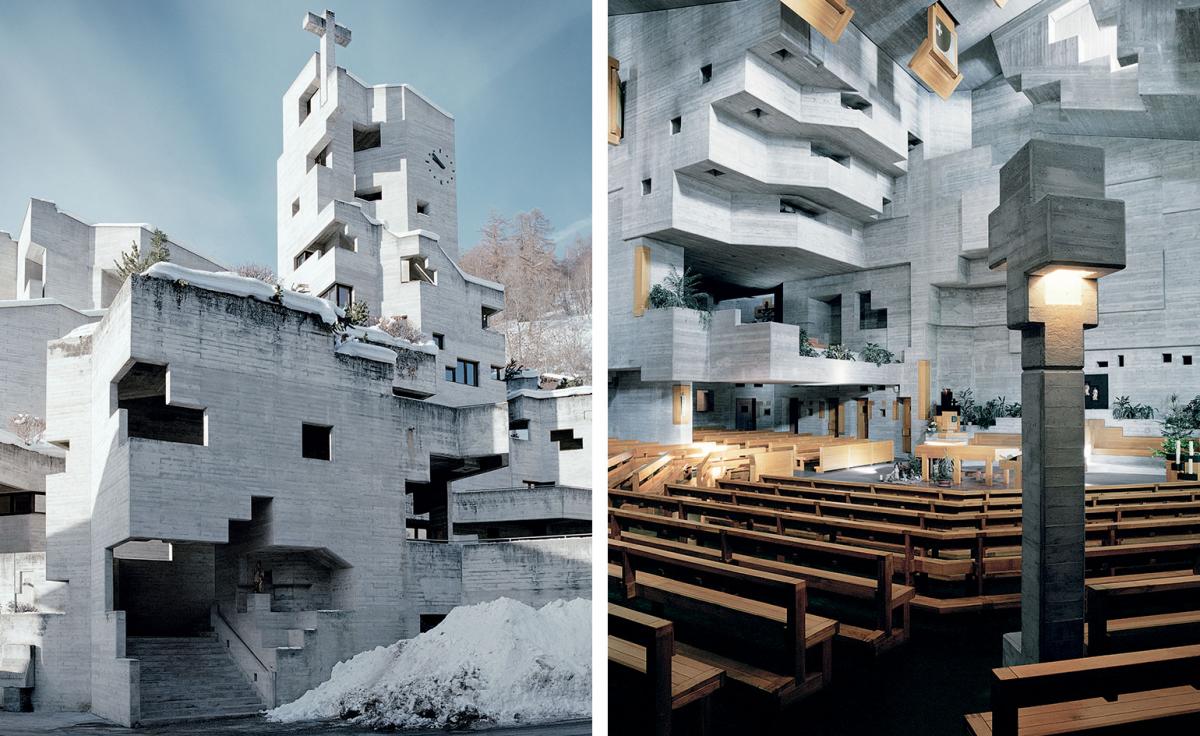
Modern post-war churches arose out of a mixture of necessity – war-ravaged Europe had lost countless places of worship – and ecumenical reform. The Vatican II council of the early 1960s resulted in a wholesale revision of the ecclesiastical designer’s approach to the physical form and layout of churches, with the traditional cruciform layout abandoned in favour of placing the altar at the heart of the structure. Switzerland might not have suffered any major war damage, but the country’s Church was at the forefront of this modernising movement. From the late 1950s to the 1970s, the country built some of the most avant-garde churches in Europe.
Concrete was the material of choice. In fact, the ongoing Swiss penchant for béton brut has turned this most controversial of materials into something of a national device, continuously developed into the modern era by each new generation of architects. It helps, of course, that one of the most iconoclastic architects of the 20th century was Swiss, a man who dedicated his career to re-shaping the global perception of architectural form.

The Church of St Nicholas: the church appears to be constructed from a cascade of sculpted concrete blocks. The roughly hexagonal plan sees the collision of spiritualism and abstraction, creating a space that vies with the great Gothic cathedrals for visual complexity.
Then, as now, Le Corbusier was hugely influential. Aside from his buildings, his legacy to his mother country was a fiercely ambitious coterie of intellectual architects who saw the development of his aesthetic and architectural theories as an essential part of their practice. Corb might have been the generator, but his admirers were keen to push the boundaries even further.
Walter Maria Förderer, born in 1928, was at the forefront of the generation of Swiss architects to practise in the late 1940s and 1950s. He began his career as a sculptor, and his use of concrete evolved from his preference for the hands-on contact with a material. By the time he was in his forties, Förderer had become an inspiration to Swiss architects, spawning a fashion for expressive concrete schemes which threatened to usurp even Le Corbusier’s achievements in the field.
Förderer was a concrete man through and through
While works by architects such as Otto Glaus and Ernst Gisel retained a kernel of functionalism – still very much evident in contemporary Swiss architecture – Förderer’s work was superficially hard-edged, but self-consciously formalist, even decorative and playful, in its manipulation of space. Staircases ‘hung’ in voids, boxed forms featured deep-set windows and quirky extrusions, while strange totemic objects rose up in defiance of modernism’s rejection of the eccentric.
In the early 1960s, along with Rolf G Otto and Hans Zwimpfer, Förderer designed the Brunnmatt-Schulhaus in Basel, an academic campus of angular concrete towers – a perverse re-imagining of the Gothic style. While Le Corbusier’s later works emphasised the combination of organic forms with rigid concrete abstraction, Förderer and his partners eschewed flowing space for a three-dimensional grid, layering functions on top of one another and reflecting the jumble with stacked concrete cubes.
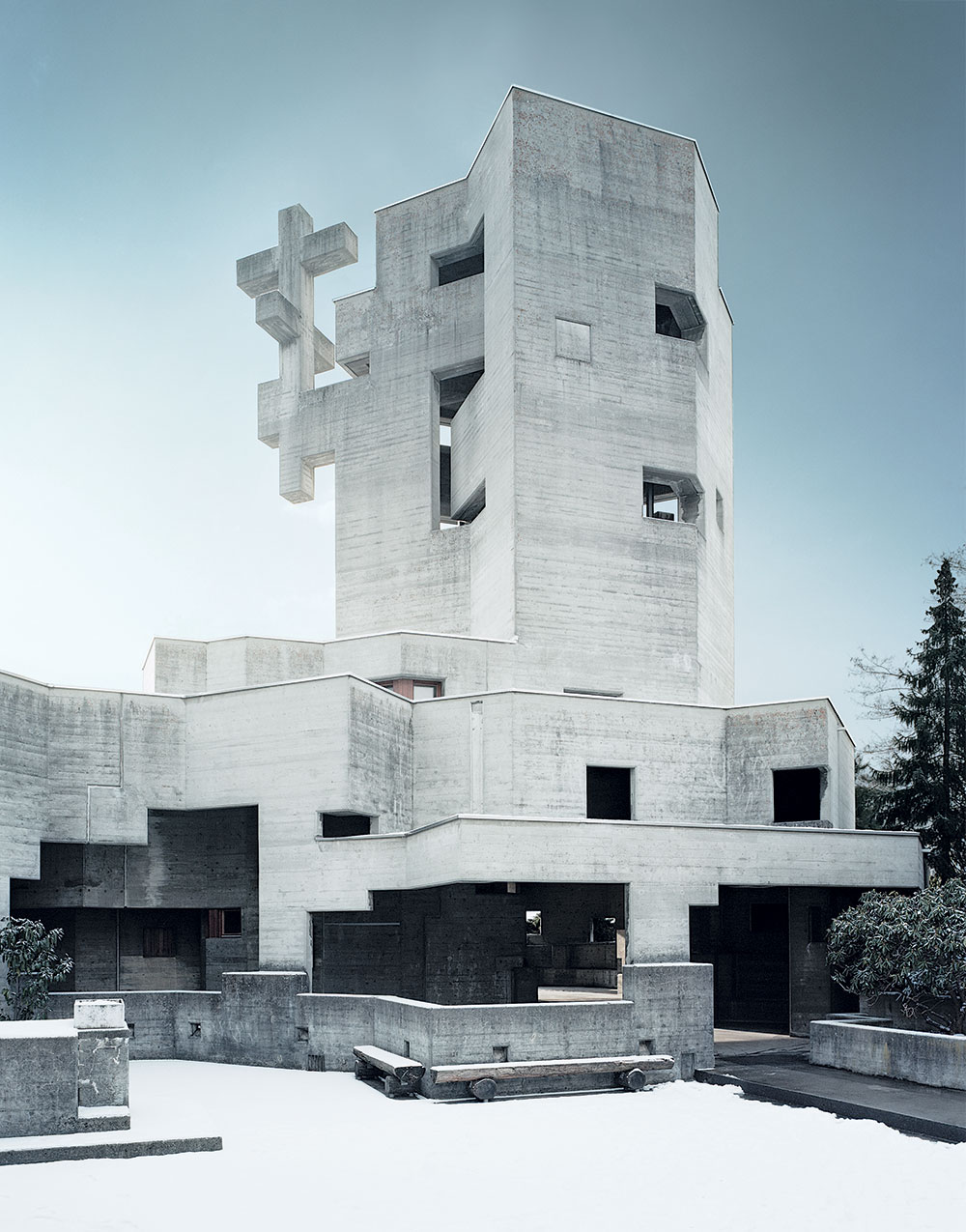
The Church of the Holy Cross: the bell tower of this church in Chur appears highly symbolic, with two interlocking elements and a cross held aloft from the church’s facade.
Förderer was also a published theorist, who used his treatises to expound upon the theory that a strictly functionalist approach resulted in inflexible and static architecture. Yet while his contemporaries seized upon the potential of ephemeral buildings constructed from industrial materials, scaffolding and other new technologies, Förderer was a concrete man through and through. His flexibility was to be achieved through scale, creating almost mega-structural complexes that could accommodate a variety of users.
Nowhere is this more evident than in his eight churches completed during the 1960s in Switzerland and Germany. The church centre at Hérémence, a small Swiss town nestled on a steeply sloping site, includes the church of St Nicholas, plus meeting rooms and accommodation. The complex resembles the hyper-dense three-dimensional assemblages created by Kurt Schwitters, rather than the flat, mannered abstraction of Le Corbusier’s purist paintings.
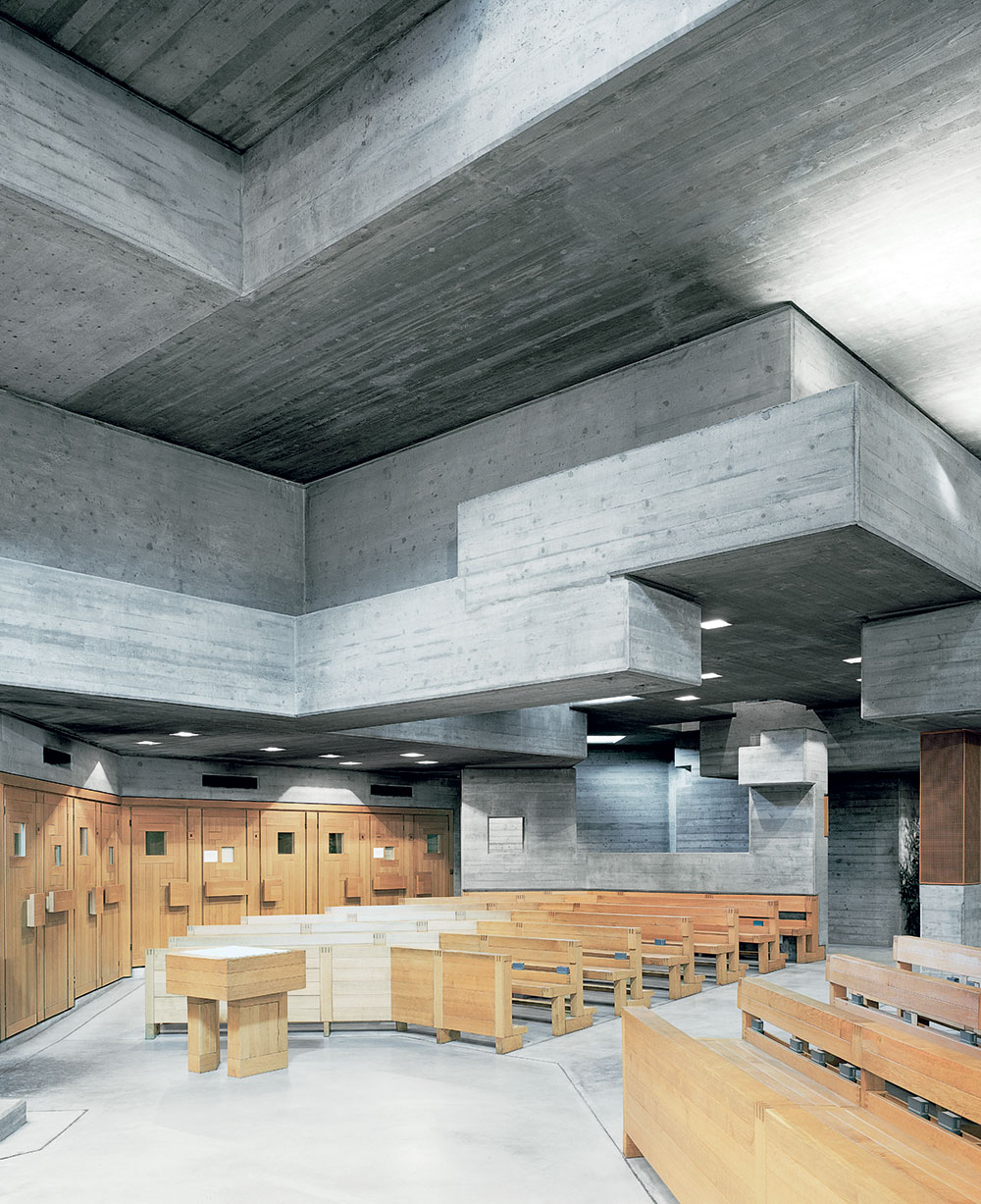
The Church of the Holy Cross: inside the church, gaps and alcoves are delineated by bespoke light oak furniture and fittings.
At Hérémence, the pulpit, cross and altar sprout from the floors and walls, with the jagged forms of the nave apparently defined by absence, as if carved from a vast block of poured concrete. Förderer worked with Otto and Zwimpfer on this darkly expressionistic project, but other works were done alone, including the churches at Bettlach and Lichtenstein.
As the design for St Nicholas was being finalised, Förderer was completing the Church of the Holy Cross in Chur. While St Nicholas is an outcrop of concrete strata, the Chur building is smaller, and squat and brooding, but no less imposing.
Spiritual architecture often shapes the aesthetic cutting edge. These churches demonstrate one man’s quest to translate the mysteries of faith into physical form. Beautifully made and well maintained, his churches are still at the heart of their communities, not brutal but beloved.
A version of this article originally appeared in the April 2009 issue of Wallpaper* (W*121)
Receive our daily digest of inspiration, escapism and design stories from around the world direct to your inbox.
Jonathan Bell has written for Wallpaper* magazine since 1999, covering everything from architecture and transport design to books, tech and graphic design. He is now the magazine’s Transport and Technology Editor. Jonathan has written and edited 15 books, including Concept Car Design, 21st Century House, and The New Modern House. He is also the host of Wallpaper’s first podcast.
-
 How We Host: Interior designer Heide Hendricks shows us how to throw the ultimate farmhouse fête
How We Host: Interior designer Heide Hendricks shows us how to throw the ultimate farmhouse fêteThe designer, one half of the American design firm Hendricks Churchill, delves into the art of entertaining – from pasta to playlists
-
 Arbour House is a north London home that lies low but punches high
Arbour House is a north London home that lies low but punches highArbour House by Andrei Saltykov is a low-lying Crouch End home with a striking roof structure that sets it apart
-
 25 of the best beauty launches of 2025, from transformative skincare to offbeat scents
25 of the best beauty launches of 2025, from transformative skincare to offbeat scentsWallpaper* beauty editor Mary Cleary selects her beauty highlights of the year, spanning skincare, fragrance, hair and body care, make-up and wellness
-
 This modernist home, designed by a disciple of Le Corbusier, is on the market
This modernist home, designed by a disciple of Le Corbusier, is on the marketAndré Wogenscky was a long-time collaborator and chief assistant of Le Corbusier; he built this home, a case study for post-war modernism, in 1957
-
 The Architecture Edit: Wallpaper’s houses of the month
The Architecture Edit: Wallpaper’s houses of the monthThis September, Wallpaper highlighted a striking mix of architecture – from iconic modernist homes newly up for sale to the dramatic transformation of a crumbling Scottish cottage. These are the projects that caught our eye
-
 A beautifully crafted concrete family house in a Mexican suburb is a contemplative oasis
A beautifully crafted concrete family house in a Mexican suburb is a contemplative oasisHW Studio have shaped a private house from raw concrete, eschewing Brutalist forms in favour of soft light, enclosed spaces and delicate geometries
-
 An apartment is for sale within Cité Radieuse, Le Corbusier’s iconic brutalist landmark
An apartment is for sale within Cité Radieuse, Le Corbusier’s iconic brutalist landmarkOnce a radical experiment in urban living, Cité Radieuse remains a beacon of brutalist architecture. Now, a coveted duplex within its walls has come on the market
-
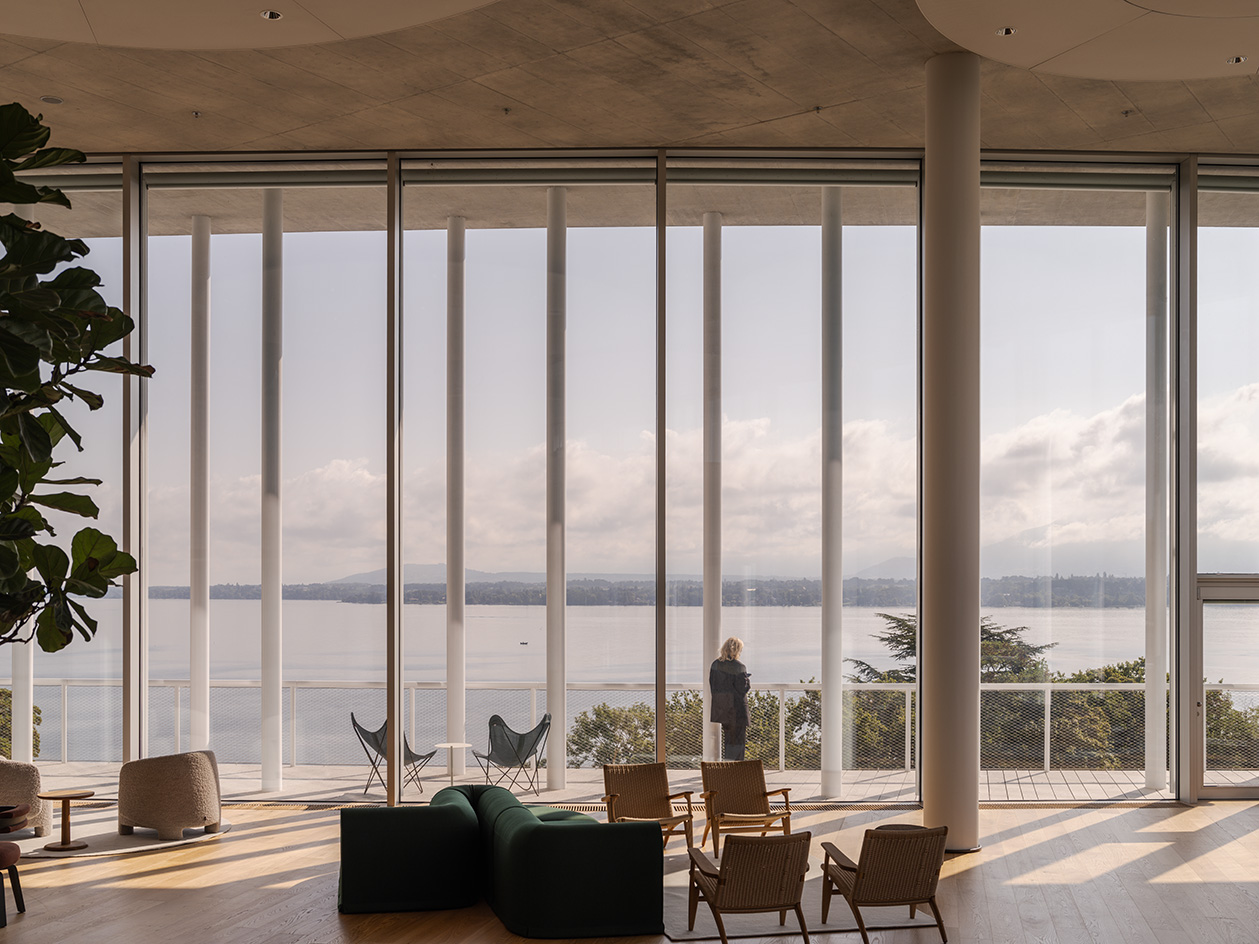 A building kind of like a ‘mille-feuille’: inside Herzog & de Meuron’s home for Lombard Odier
A building kind of like a ‘mille-feuille’: inside Herzog & de Meuron’s home for Lombard OdierWe toured ‘One Roof’ by Herzog & de Meuron, exploring the Swiss studio’s bright, sustainable and carefully layered workspace design; welcome to private bank Lombard Odier’s new headquarters
-
 This tiny church in Denmark is a fresh take on sacred space
This tiny church in Denmark is a fresh take on sacred spaceTiny Church Tolvkanten by Julius Nielsen and Dinesen unifies tradition with modernity in its raw and simple design, demonstrating how the church can remain relevant today
-
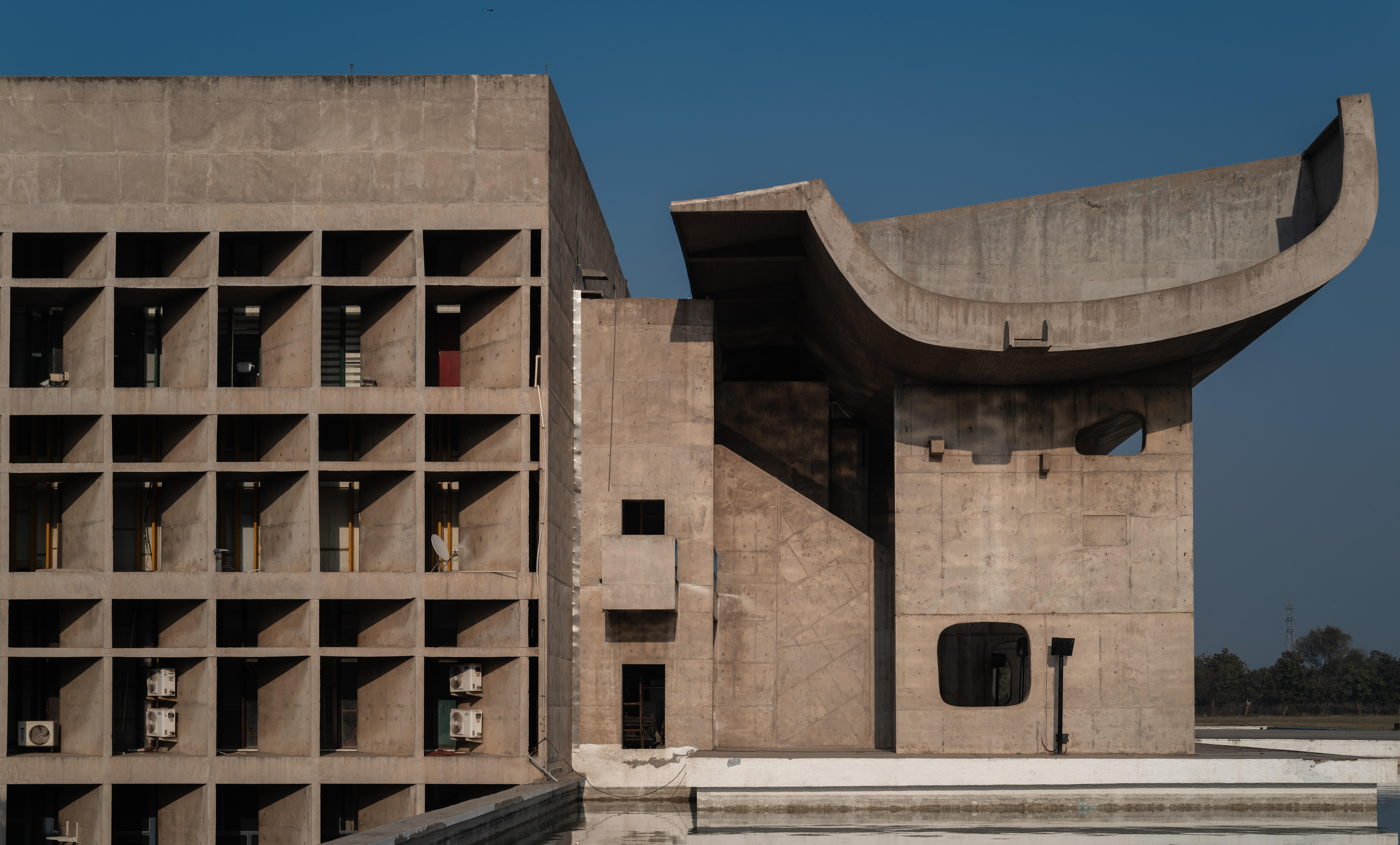 A guide to modernism’s most influential architects
A guide to modernism’s most influential architectsFrom Bauhaus and brutalism to California and midcentury, these are the architects who shaped modernist architecture in the 20th century
-
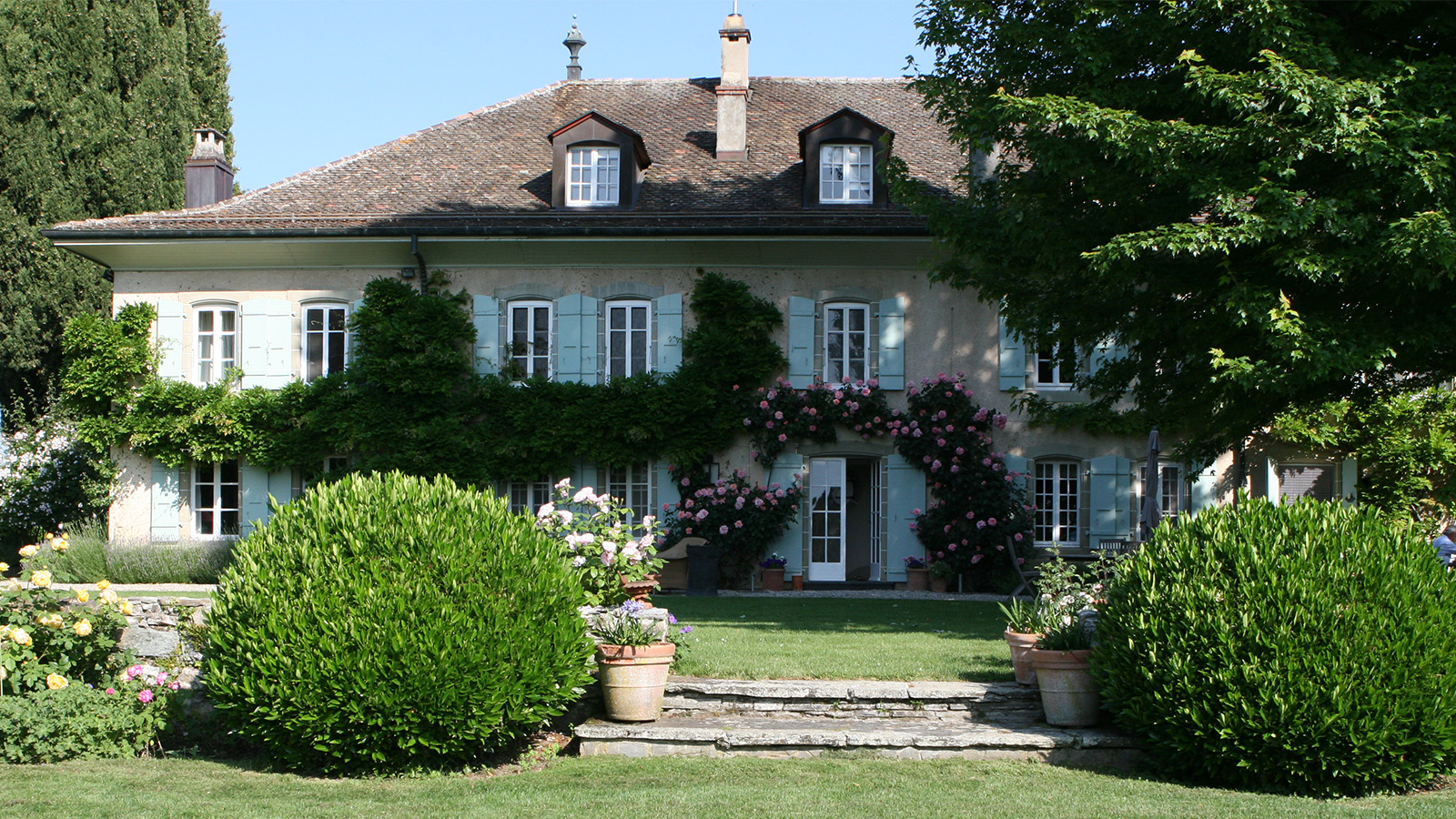 Audrey Hepburn’s stunning Swiss country home could be yours
Audrey Hepburn’s stunning Swiss country home could be yoursAudrey Hepburn’s La Paisable house in the tranquil village of Tolochenaz is for sale